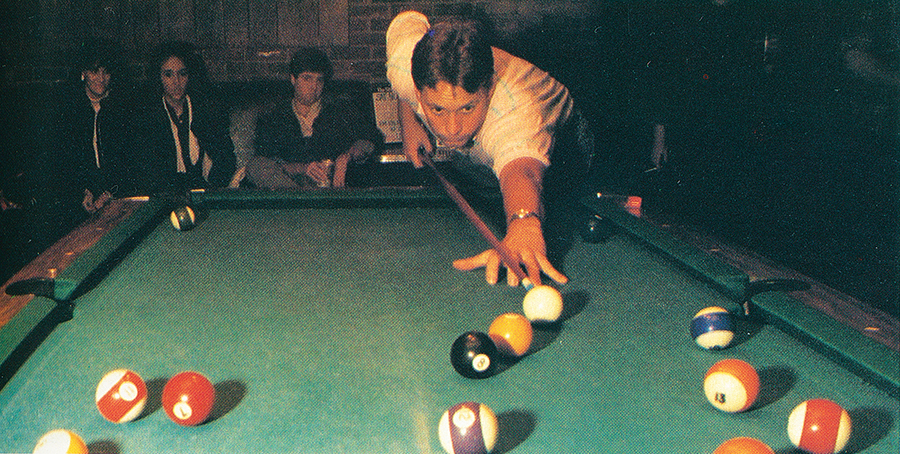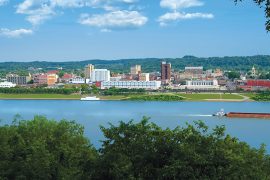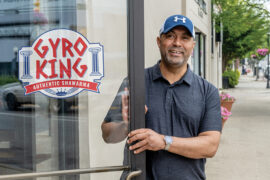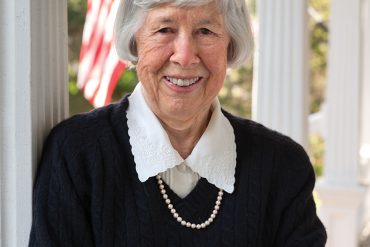We asked our readers, and they answered in droves. Here’s the second installment of our series on your favorite watering holes from the past.
By David “Alligator Jackson” Williams
HQ 122 | SUMMER 2023
Huntington’s nightlife was active and exciting for decades. The dance floors at local nightclubs boogied through the disco era and beyond. Many Marshall alumni have fond memories of enjoying a few beers after class or watching the big game with friends. A local lounge even helped launch the career of a country music superstar. Whatever the occasion, there were plenty of places in Huntington to celebrate and have a good time. Whether a person liked to get down, watch sports, listen to local bands or just talk with friends, there was always a place to do it in Huntington.
The Varsity
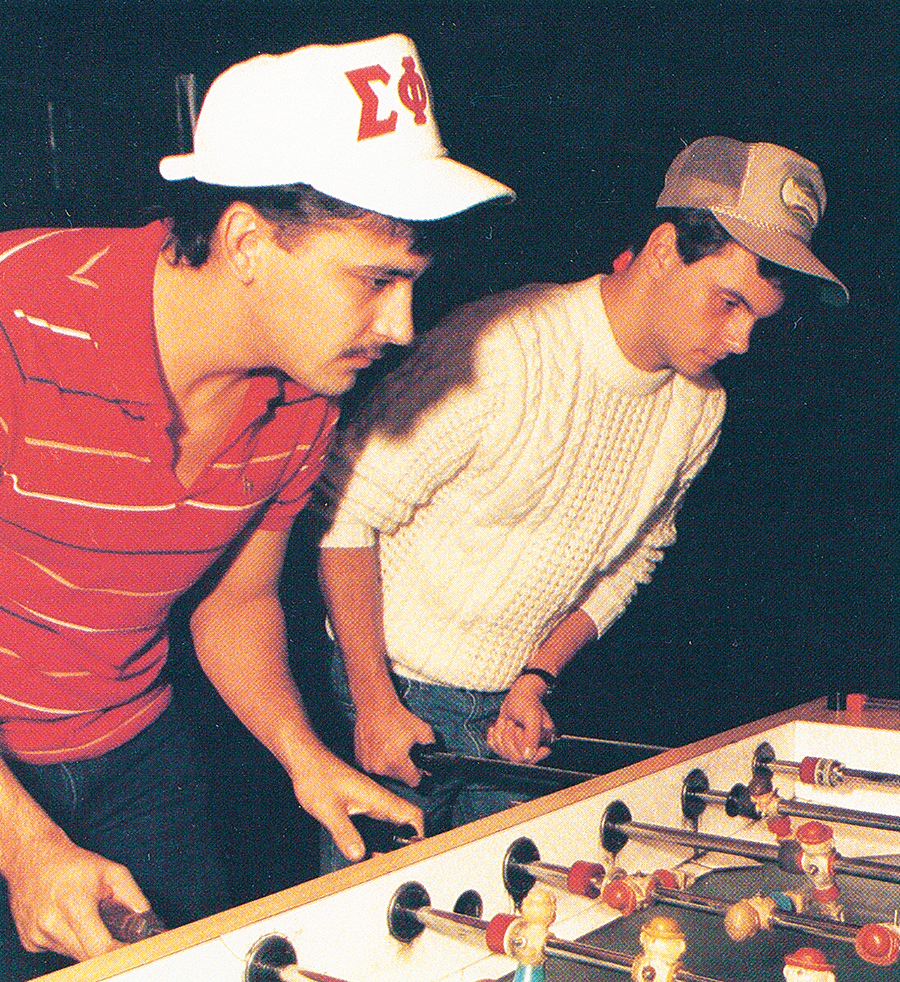
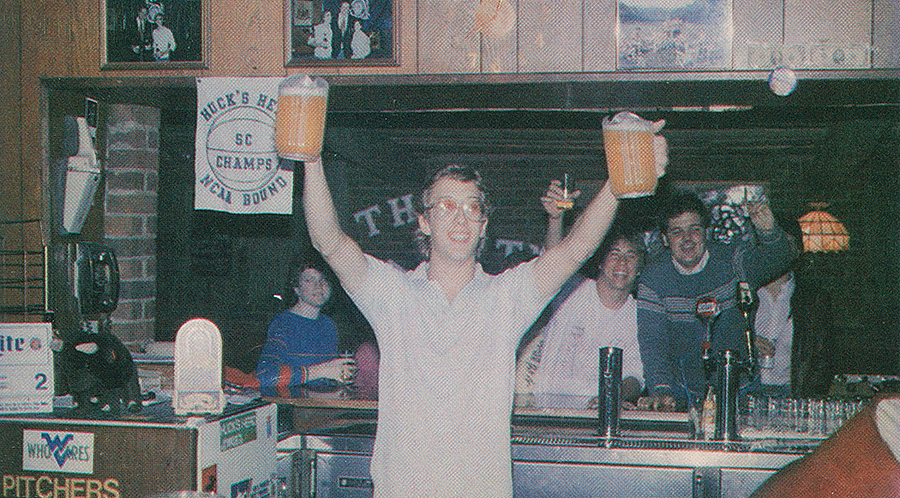
The Varsity was on 20th Street where the Joan C. Edwards Stadium now stands. Owner Jack Riggs had owned the El Gato Grill in the alley across the street. When El Gato was forced to close due to imminent domain, Riggs opened The Varsity in 1964. For years it was called by both names until gradually the El Gato name was forgotten. In 1974, the bar was bought by Dominic Sellitti. He owned it until 1983, when it was sold to a 20-year-old Herb Stanley. The Varsity, Double Dribble and Boney’s Hole in The Wall were the big Marshall University bars in the 1980s. Patrons would walk up and down the street to the three bars. The Varsity was a beautiful joint: the walls were exposed brick, and the bar actually sat in the middle of the club like an island. There were two pool tables and two foosball tables. Stanley incorporated a lot of fun into the bar with plenty of promotions. On Labor Day, he had Beach Night. He brought in sand, seashells and other decorations to dress the bar up like a beach. He had a Pony Night, during which he sold thousands of 7-ounce “pony bottles” of beer. Stanley always laughed that he ran out of space in the alley to throw away all those empty bottles. The Varsity had to be vacated by Jan. 1, 1990, to make way for the new football stadium — so Stanley moved to Fourth Avenue, and The Union was born. It is still open today in its second location at 1125 Fourth Ave. The Varsity will always be a legend to Marshall alumni.
Mycroft’s
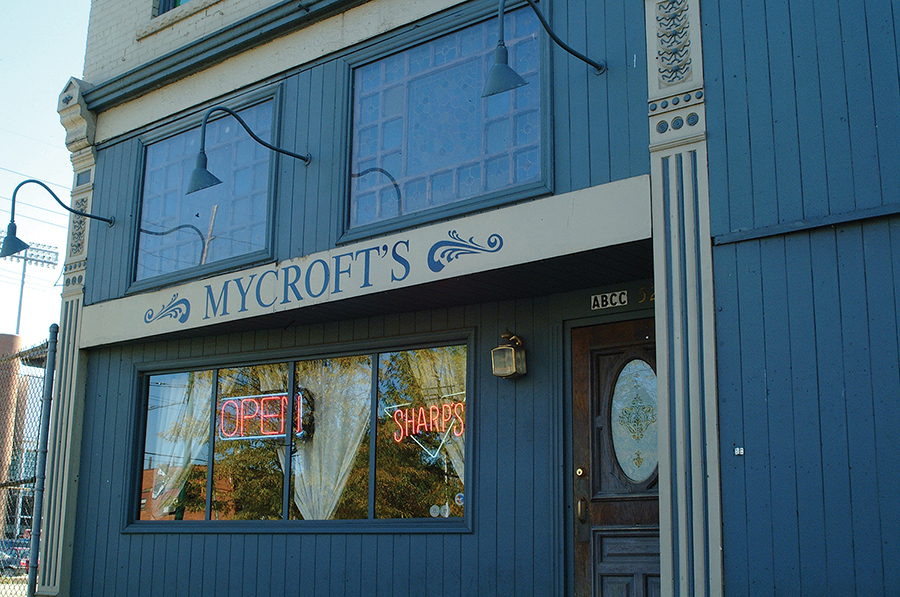
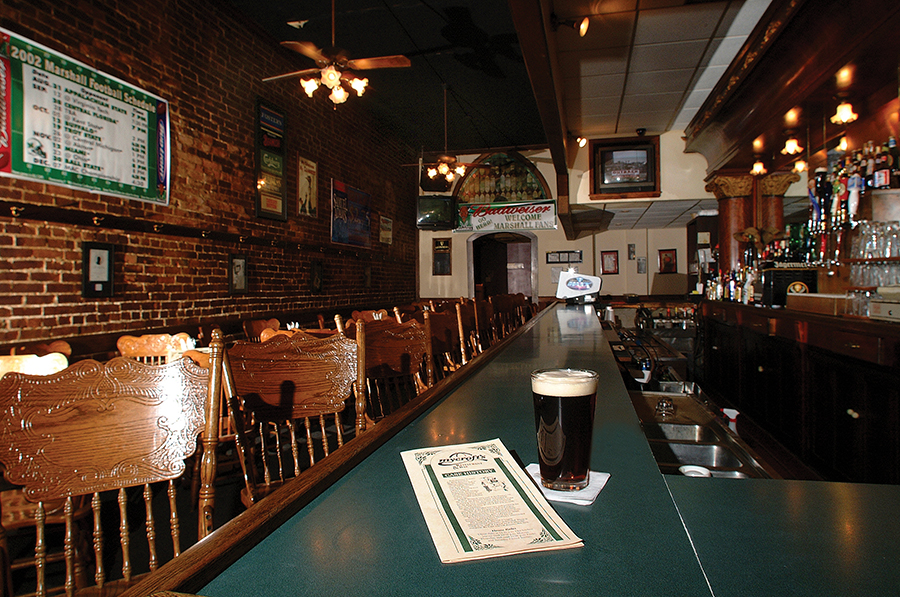
For 20 years, Mycroft’s Bar & Grill stood on the corner of Third Avenue and 20th Street. It closed in 2004 when Marshall University purchased the property and demolished the building to make way for more parking at the Joan C. Edwards Stadium. The location of the bar made it popular with Marshall sports fans due to its proximity to both the football stadium and basketball center. Hordes of fans would frequent Mycroft’s before and after home games or hang out at the bar to watch away games on television. Marshall students and professors would sometimes gather there after classes, and it was always a popular meeting place for students. The legend is that the bar was named after Sherlock Holmes’ older and smarter brother Mycroft. One Mycroft’s logo did feature a Sherlock Holmes-type hat. The physical appearance of the bar was inviting: the exterior featured blue paneling and a large wooden door, while the interior had exposed brick walls and a huge bar hand-carved out of wood. Several wooden tables and chairs lined the long, narrow space and accommodated a robust lunch and dinner crowd, who enjoyed the grill’s Nitty Gritty Grinder (roast beef or turkey on an Italian roll) and Monte Cristo sandwiches.
The Double Dribble
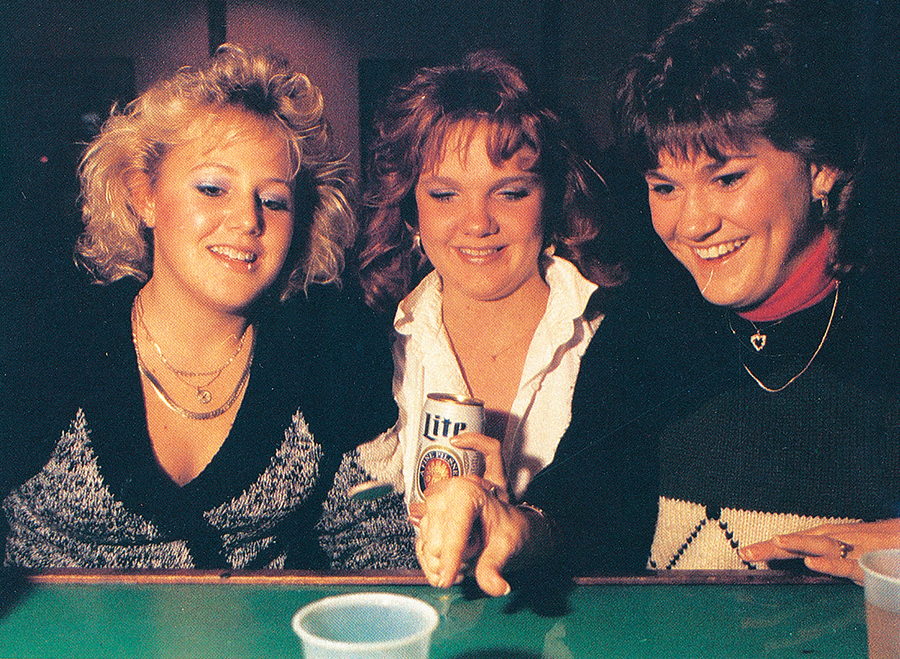
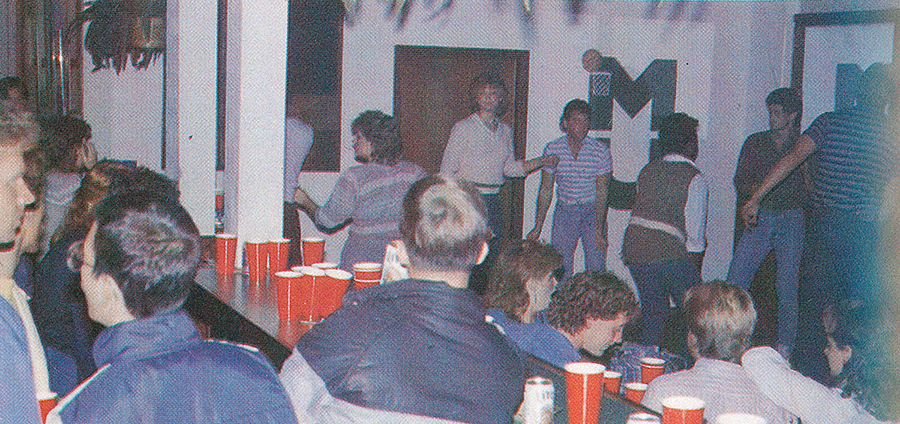
In the early 1980s, Vince and Stephanie Carter took a plain, no-frills bar located at 320 20th St. (part of the parking lot for the football stadium now) and packed it wall to wall every weekend with Marshall students, who slammed down huge “Slam Dunk” draft beers for a dollar. “The Dribble” was easily the most popular bar on campus in the early ’80s. The bar sold a record 10 kegs of beer the day WVU came to Huntington to play basketball for the first time. The Thundering Herd prevailed 91-78, and the bar was jampacked from noon until 2 a.m. when the beer finally ran out. On weekends, the Dribble became so crowded that the Carters had to employ three bouncers a night — usually Marshall football players like Jim Devine, Terry Echols, Robbie Pasko and others. The Dribble was also the place where Herd football and basketball players entertained recruits, who could glimpse photos on the wall of Marshall greats like Hal Greer, Danny and Mike D’Antoni, Russell Lee, Jackie Hunt and Ted Shoebridge (a fraternity brother of Vince’s). Other Herd stars had their names engraved on the bar’s green and white stools. In a bit of irony, Stephanie and Vince met at another popular campus bar, Boney’s Hole in The Wall, where Vince worked in the mid-’70s.
Jake’s Bar


Jake’s Bar sat on the corner of Third Avenue and 15th Street, close to where one of Huntington’s newest restaurants, The Grill on Third, now resides. John Black was the iconic owner of the bar in the ’70s, ’80s and ’90s. Black was a former Herald-Dispatch sportswriter whom everyone came to see. With his booming voice, colorful stories and cackling laugh, he was almost as popular as the beer he served — which was always the coldest in town. Happy hour brought in close friends and a regular crowd, but you never knew who’d come drifting into Jake’s in the wee hours as patrons spilled out of the other clubs at 2 a.m.; they kept the bar rocking until 4 a.m. Jake’s was the perfect place to watch Marshall football and Reds baseball while listening to expert, though sometimes drunken, commentary from Black and his buddies. Marshall game day brought tailgating and huge spreads of food. The Super Bowl was always a big event at the bar as well; it was tradition for former patrons to come back to town for the party. Jake’s hosted an eclectic crowd of college students, lawyers, bikers, sports enthusiasts and even the homeless. Many would gather on the deck out back to play horseshoes. The bar was torn down in the late ’90s, but Black would later reopen Jake’s on Fourth Avenue and 14th Street with Johnny “Sarge” Piepenbrink as a co-owner. They would later sell that bar. Although the Fourth Avenue bar was very popular through the years, it was the Third Avenue location that achieved legendary status.
The Ragtime Lounge
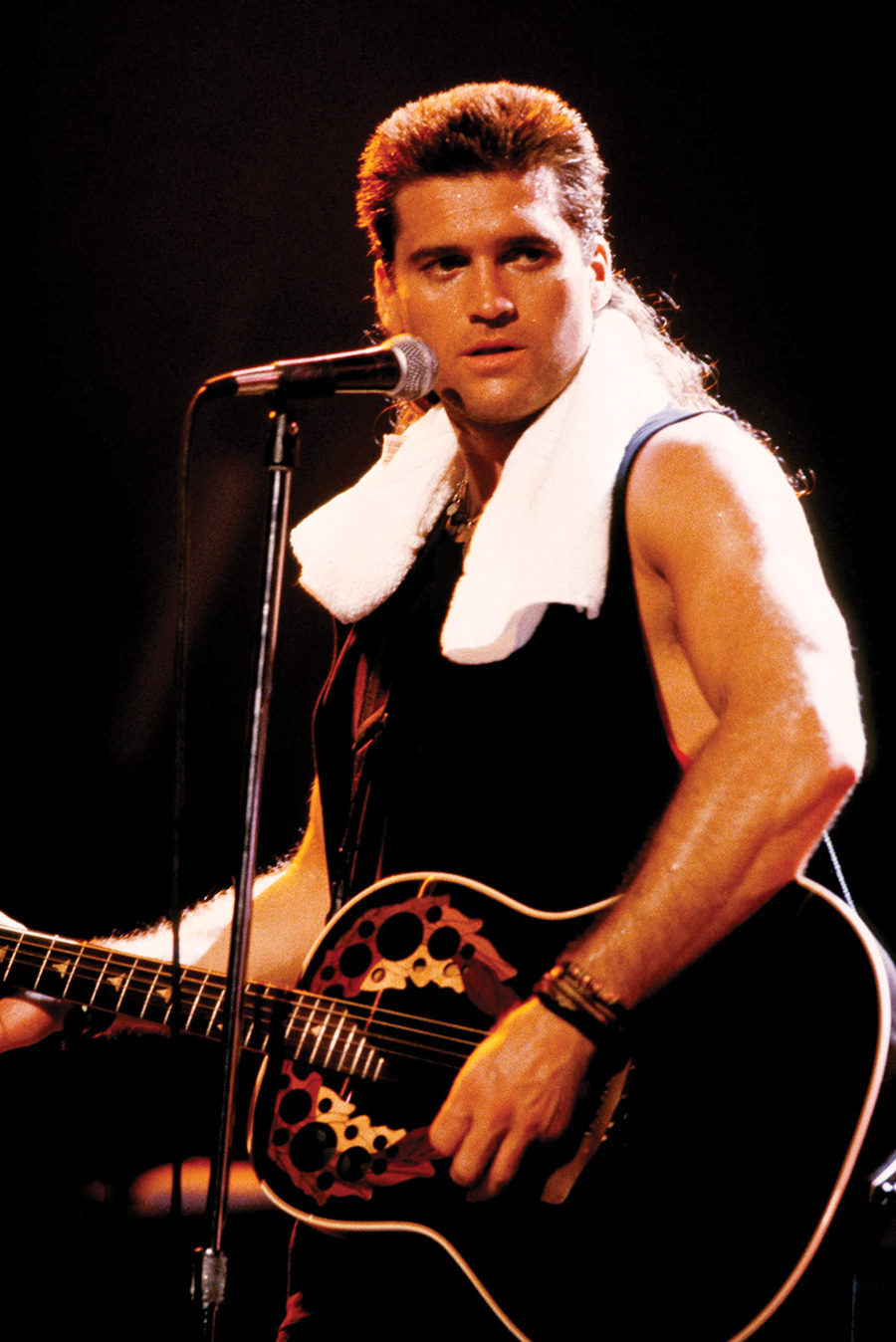
Because it helped launch the career of music legend and television star Billy Ray Cyrus, the Ragtime Lounge was dubbed “The House That Billy Ray Built.” Back in the early days of his budding career, Cyrus would play five nights a week at the Ragtime and then drive to Nashville in search of a recording contract. A standing room-only audience would pack the West End club on weekends. Owned by Bud Waugh, the Ragtime sat next to the old Pepsi warehouse near the West End exit of I-64. Other talented bands like Cash, The Short Order Band, and Kenny Joe Johnson and Kentucky Rain rocked the bar over the years. Tragically, the club burned down in the late ’90s. However, Waugh did not let that stop him for long. He turned an old pizza place at 1605 Madison Ave. into an even bigger club. In honor of the Ragtime and his career as a four-time Golden Gloves boxing champion, Waugh named it R.T. Champs.
The Inferno

The Inferno, located at 2202 Third Ave., was a large white building that sat on the spot now occupied by Dot Hicks Field, where Marshall University’s Lady Herd softball team plays. It was one of the Huntington discos that had the Tri-State boogieing in the ’70s and ’80s. The huge dance floor was framed by mirrors on the wall. To complete the glam look, a big silver disco ball hung over the dance floor. The Bee Gees, KC & the Sunshine Band, Donna Summer, Chic, Blondie, Anita Ward and other disco-era artists were played by live disc jockeys. What made The Inferno stand out was a gimmick that no other Huntington club had — telephones on each table so patrons could call one another and offer to buy someone a drink or ask someone to dance. For single men and women, it was the coolest way to break the ice. The Inferno also had a mechanical bull, like the one featured in the 1980 movie Urban Cowboy. The Inferno closed in the mid-’80s.
The Old Library

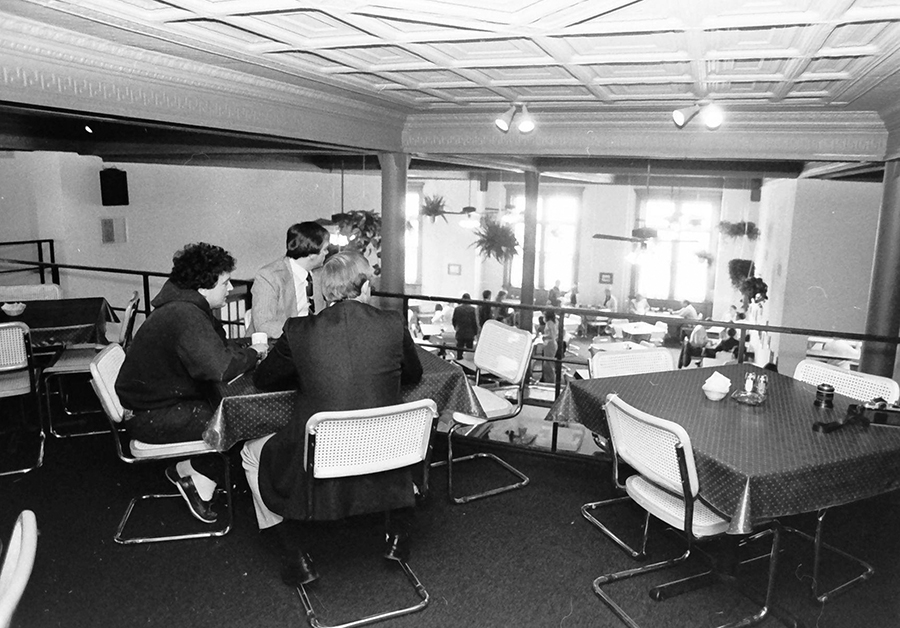
The Old Library was a restaurant/nightclub housed inside the former Carnegie Library (and later the first Cabell County Library) at the corner of Fifth Avenue and Ninth Street. When Cabell County’s new library opened in 1982, the old library building was sold to a group of investors from Columbus, Ohio, for $185,000. The group invested another $150,000 into renovating the Beaux Arts-style building into a restaurant and bar. The theme, of course, was a library, complete with many of the same books and fixtures that were part of the original structure. The renovations made way for a square bar in the middle of the main floor, a lounge area with sofas, a game room and a dance floor. A live DJ spun records in the evening, and once a week The Old Library was converted into a comedy club that hosted comics from across the country. And it wasn’t just known for nightlife: many locals were drawn to the hot spot for its delicious lunch and dinner offerings.
The Driftwood

The Driftwood (previously known as The Chateau) was a bar that played an important role in the 1970s. Located at 1121 Seventh Ave., it was the only place in Huntington where it was acceptable for the gay, lesbian and transgender community to gather. The Driftwood became known for its entertainment, including regular drag shows that increased the bar’s notoriety. Larry Ransbottom worked there in the ’70s and ’80s and eventually bought the bar in 1984. “It was a pleasure to be there each day and night,” Ransbottom said. “There were great patrons, and it was a safe place for so many. At that time, gay people had a bad time from so many rednecks.” Former patron Stephanie Davis said she remembers The Driftwood fondly. “When you entered The Driftwood, you were usually met by a woman named Donna, who would check your ID and take your cover charge,” Davis recalled. “The downstairs had two sections: one section featured pool tables with tables and chairs lining the walls, while the other section was home to a long bar stretching the length of the wall. There were several small TVs over the bar that often played same-sex pornography. There was one unisex bathroom downstairs. The upstairs was called ‘The Beehive.’ It featured a large, open area with a dance floor, mirrored walls and a bar tended by Jim Hobbs, who would tell everyone how beautiful they were. Upstairs was all about the drag shows and dancing.” The Driftwood closed in 2008, but it left a lasting legacy of support, acceptance and safety for the LGBTQ+ community.
The Mad Hatter
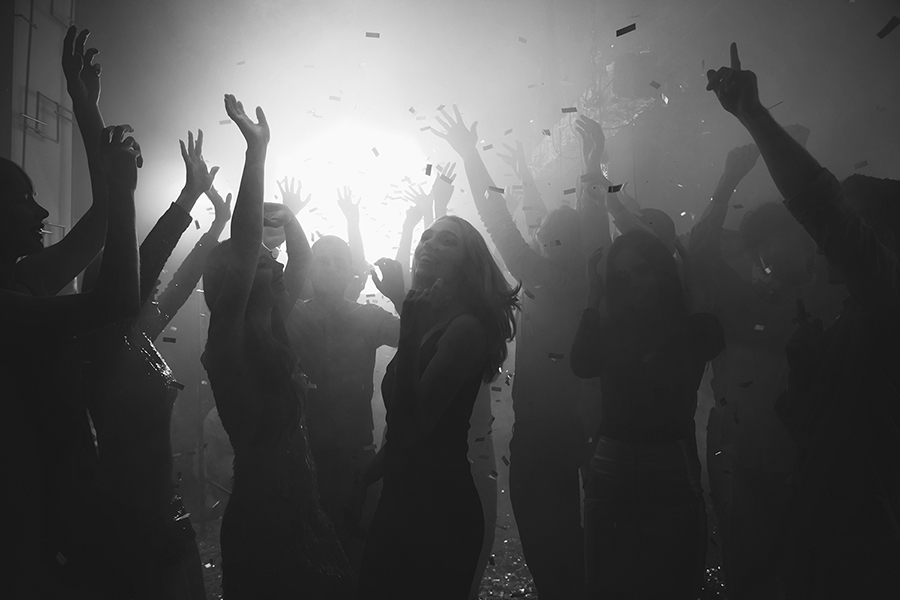
The Mad Hatter opened in the mid-1980s on Third Avenue, just down from 20th Street. The building housed several bars over the years, including The Jail, Rocker’s, Daddy’s Money and Bachelor’s Bait. During ladies’ nights at the Mad Hatter, admission was $3 but women drank for free. The ladies were let in at 8 p.m. and would already be on the dance floor when the guys were let in at 9 p.m. The bar would throw in wet T-shirt contests and male strippers occasionally to enhance its racy reputation. When the building was knocked down to build Marshall’s Joan C. Edwards Stadium, the Hatter didn’t miss a beat. It moved to 10th Street between Eighth and Ninth avenues, a location that had been home to such bars as Stony Room, Meadow Brook, Rocker’s and Golden Pond. But the Mad Hatter, owned by Steve Newman, John Keaton and other investors, created the most lasting memories — and even a few marriages — for those who met there. The club remained open and popular until around 1997, when both the Mad Hatter and the Ragtime Lounge burned down on the same night.
DeSoto’s
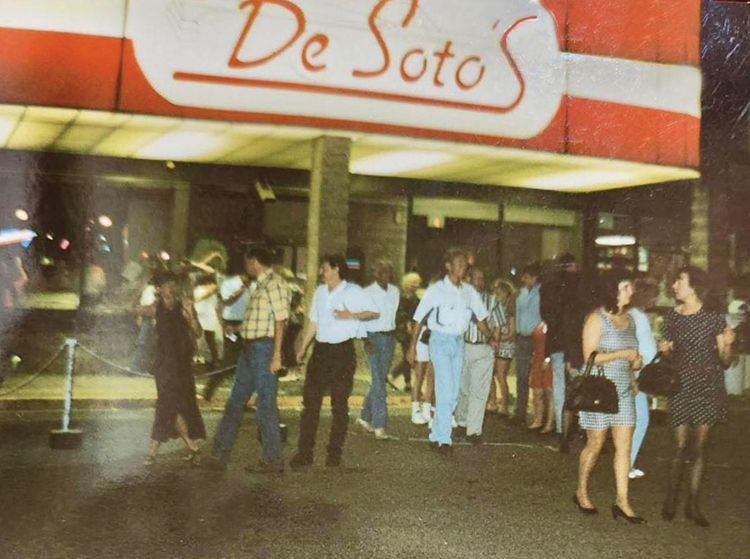
DeSoto’s was located in the Kmart Plaza on Route 60 in Huntington and was marketed to attract a mature, as well as nostalgic, crowd. Patrons were greeted by a doorman who checked their IDs, collected a cover charge and wished them well. The bouncers wore white tuxedo shirts and black ties. A white and baby blue ’58 DeSoto sat at the front of the space, while two bars on both the left and right walls beckoned thirsty guests. The photos on the walls and the overall decor were 1950s-themed. Tables and chairs sat atop burnt red carpet, and a black and white tile dance floor was strategically placed in the middle of the club. A raised DJ booth pumped music throughout the bar, from dance tracks to disco to, of course, ’50s hits like “Rock Around the Clock” and “Rockin’ Robin.” DeSoto’s opened in the mid-1980s and remained open until around 2006.

